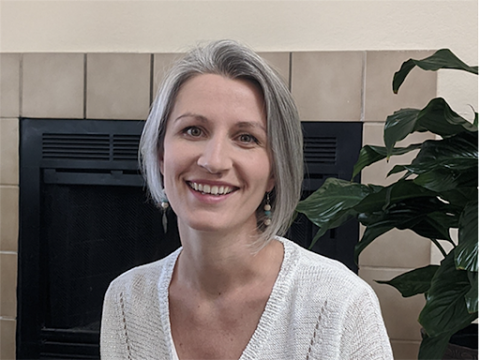Vira Kravets, Ph.D.
Faculty Candidate Peds/BioE
Postdoctoral Fellow
Department of Bioengineering
University of Colorado
Anschutz Medical Campus
Seminar Information

Recently it has been shown that network properties similar to those existing in the brain, emerge in the pancreas. Specifically, in the neuroendocrine micro-organs responsible for maintaining blood glucose homeostasis called islets of Langerhans. It was found that small subsets of cells can disproportionately drive function of the other larger subset of cells. Network theory, combined with quantitative light microscopy techniques offer a powerful approach to interrogate connections between physical structure and function of the network. In my research program, I will apply network theory analysis, computational modelling, advanced microscopy techniques, and single-cell targeted laser intervention to prognose structural-functional islet connectivity and disease pathogenesis.
Pancreatic islets are comprised of several cell types, including insulin secreting β-cells. -cell failure causes diabetes afflicting >400M people worldwide. Diabetes leads to blindness, kidney and nerve damage, and cardiovascular disease. Understanding the function of -cells and their interactions in the islet is necessary for the development of therapies for diabetes.
-cells secrete insulin in response to blood glucose elevation. This can be visualized by fluorescent calcium indicator, allows real-time monitoring of the glucose-stimulated insulin secretion on a cellular and organ level. The network in the islet reflects the time that cellular activity is synchronized with other cells. Cells possessing a majority of functional connections (highest degree of synchronization with other cells) are called “hubs”. When these cells are silenced, the islet insulin secretion is disrupted. This gives us an idea of what may be happening on early stages of diabetes. Hub cells may be more prone to stress and death, because of being most metabolically active.
Until recently, it was assumed that cells in the islet respond to glucose without any order. I have shown that there exists an order to response, and discovered cells leading this response: “first responder -cells”. Hub cells are a subset of the first responder subpopulation. My interest lies in discovering how disruption to the islet electrical coupling leads to functional network damage, disease onset and progression.
Another islet cell type - a-cells secrete glucagon, which stimulates insulin secretion from -cells. I will test the degree to which neighboring -cells are altering the -cell’s first responder ability to drive the islet. It has been shown that upon chronic neural inhibition there is significant decrease in the simultaneous activity, suggesting an important role of the neural regulation in the islet’s response to glucose. In diabetes alterations in islet innervation have been found. I will test to which degree the islet innervation alters -cell network structure and how it’s disruption in diabetes affects b-cell ability to drive an islet’s response.
In summary, my goal is to understand the reasons behind the disproportionate control β-cell subpopulations exert over islet function and to discover patterns of functional β-cell network plasticity in health and disease. I will achieve this by implementing novel 2-photon laser ablation, quantitative imaging techniques, computational models of islet electrophysiology and optogenetic neuron stimulation in vivo in zebrafish, in situ in human pancreatic samples from diabetic and healthy donors.
Dr. Vira Kravets obtained her Ms. Sci in Physics, with specialty “Photonics” from the Kyiv National University of Ukraine. She then moved to Colorado, USA to obtain her Ph.D. in Physics. Her thesis focused on Plasmonic nano materials for bioimaging and biosensing applications.
Dr. Kravets applied her knowledge of optics, spectroscopy, and computational modelling to study function of living pancreatic tissue from healthy and diabetic donors. As a Postdoctoral Fellow at the Anschutz Medical Campus of the University of Colorado, Dr. Kravets studies role of heterogeneity of the insulin-producing cells in the formation of the neuro-endocrine networks in pancreatic islets. She discovered a “first-responder” cell population, which drives micro-organs’ response to blood glucose.
Dr. Kravets is a recipient of multiple research awards and grants, including career awards from NIH (NIDDK) : “Emerging Leaders in Type1 Diabetes” and from the Burroughs Wellcome Fund: “Careers at Scientific Interfaces”.
